
The Kirkbride Plan was a system of mental asylum design advocated by American psychiatrist Thomas Story Kirkbride (1809–1883) in the mid-19th century. The asylums built in the Kirkbride design, often referred to as Kirkbride Buildings, were constructed during the mid-to-late-19th century in the United States.

The Danvers State Hospital, also known as the State Lunatic Hospital at Danvers, The Danvers Lunatic Asylum, and The Danvers State Insane Asylum, was a psychiatric hospital located in Danvers, Massachusetts. It was built in 1874, and opened in 1878, under the supervision of prominent Boston architect Nathaniel Jeremiah Bradlee, on an isolated site in rural Massachusetts. It was a multi-acre, self-contained psychiatric hospital designed and built according to the Kirkbride Plan.
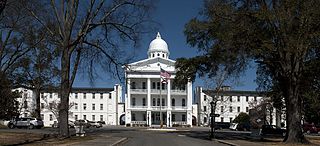
Bryce Hospital opened in 1861 in Tuscaloosa, Alabama, United States. It is Alabama's oldest and largest inpatient psychiatric facility. First known as the Alabama State Hospital for the Insane and later as the Alabama Insane Hospital, the building is considered an architectural model. The hospital houses 268 beds for acute care, treatment and rehabilitation of full-time (committed) patients. The Mary Starke Harper Geriatric Psychiatry Hospital, a separate facility on the same campus, provides an additional 100 beds for inpatient geriatric care. The main facility was added to the National Register of Historic Places in 1977.
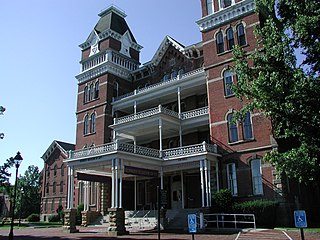
The Athens Lunatic Asylum, now a mixed-use development known as The Ridges, was a Kirkbride Plan mental hospital operated in Athens, Ohio, from 1874 until 1993. During its operation, the hospital provided services to a variety of patients including Civil War veterans, children, and those declared mentally unwell. After a period of disuse the property was redeveloped by the state of Ohio. Today, The Ridges are a part of Ohio University and house the Kennedy Museum of Art as well as an auditorium and many offices, classrooms, and storage facilities.
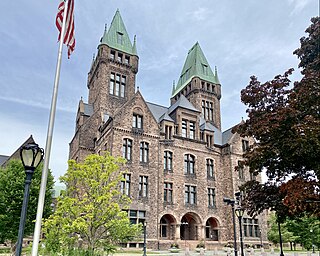
The Richardson Olmsted Campus in Buffalo, New York, United States, was designated a National Historic Landmark in 1986. The site was designed by the American architect Henry Hobson Richardson in concert with the famed landscape team of Frederick Law Olmsted and Calvert Vaux in the late 1800s, incorporating a system of treatment for people with mental illness developed by Dr. Thomas Story Kirkbride known as the Kirkbride Plan. Over the years, as mental health treatment changed and resources were diverted, the buildings and grounds began a slow deterioration. By 1974, the last patients were removed from the historic wards. On June 24th, 1986, the former Buffalo State Asylum for the Insane was added to the National Historic Landmark registry. In 2006, the Richardson Center Corporation was formed to restore the buildings.
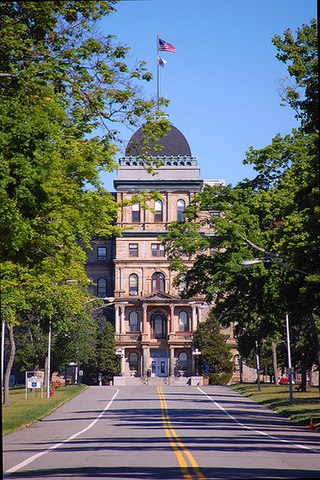
Greystone Park Psychiatric Hospital referred to both the former psychiatric hospital and the historic building that it occupied in Morris Plains, New Jersey. Built in 1876, the facility was built to alleviate overcrowding at the state's only other "lunatic asylum" located in Trenton, New Jersey.

The Institute of Pennsylvania Hospital, also known as Kirkbride's Hospital or the Pennsylvania Hospital for Mental and Nervous Diseases, was a psychiatric hospital located at 48th and Haverford Streets in Philadelphia, Pennsylvania, USA. It operated from its founding in 1841 until 1997. The remaining building, now called the Kirkbride Center is now part of the Blackwell Human Services Campus.
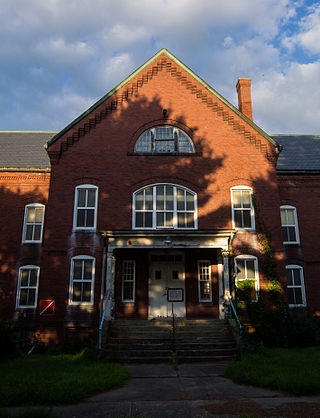
Medfield State Hospital, originally the Medfield Insane Asylum, is a historic former psychiatric hospital complex at 45 Hospital Road in Medfield, Massachusetts, United States. The asylum was established in 1892 as the state's first facility for dealing with chronic mental patients. The college-like campus was designed by William Pitt Wentworth and developed between 1896 and 1914. After an era dominated by asylums built using the Kirkbride Plan, Medfield Insane Asylum was the first asylum built using the new Cottage Plan layout, where instead of holding patients in cells, they would be integrated into a small community and work a specific job. It was formally renamed "Medfield State Hospital" in 1914.

Agnew's Village was a small unincorporated village in what is now Santa Clara, California. It was named for Abram Agnew, a Santa Clara Valley pioneer from Ohio who settled there around 1873. Agnew donated 4 acres (1.6 ha) of land for a South Pacific Coast Railroad station and laid out the town, causing the station and town to be referred to as "Agnew's". The railroad depot is still standing.

Samuel H. Shapiro Developmental Center, formerly named the Kankakee State Hospital, is a developmental center in Kankakee, Illinois, on the banks of the Kankakee River.
The Jacksonville Developmental Center was an institution for developmentally delayed clients, located in Jacksonville, Illinois. It was open from 1851 to November 2012. As of December 2012, the 134-acre (54 ha) grounds was still owned by the State of Illinois.
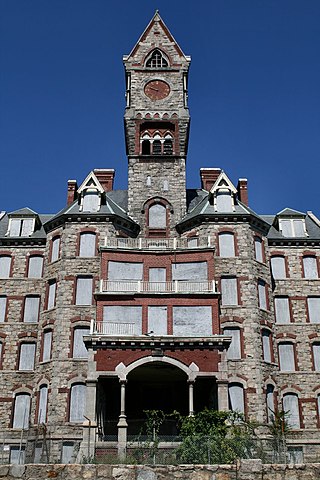
Worcester State Hospital was a Massachusetts state mental hospital located in Worcester, Massachusetts. It is credited to the architectural firm of Weston & Rand. The hospital and surrounding associated historic structures are listed as Worcester Asylum and related buildings on the National Register of Historic Places.
The Mount Pleasant Mental Health Institute was a psychiatric institution located in Mount Pleasant, Iowa, USA. Originally known as the Iowa Lunatic Asylum, it opened in 1861. It is located on the same campus as The Mount Pleasant Correctional Facility. There was also a labyrinth of tunnels which connected every building. It was the first asylum in Iowa and was built under the Kirkbride Plan.

Stockton State Hospital or the Stockton Developmental Center was California's first psychiatric hospital. The hospital opened in 1851 in Stockton, California, United States, and closed 1995–1996. The site is currently used as the Stockton campus of California State University, Stanislaus.

The Fergus Falls Regional Treatment Center is a former hospital located in Fergus Falls, Minnesota. It was built in the Kirkbride Plan style and first opened to patients in 1890. Over the next century it operated as one of the state's main hospitals for the mentally ill and also worked with people with developmental disabilities and chemical dependency issues. It was added to the National Register of Historic Places in 1986.

Napa State Hospital is a psychiatric hospital in Napa, California, founded in 1875. It is located along California State Route 221, the Napa-Vallejo Highway, and is one of California's five state mental hospitals. Napa State Hospital holds civil and forensic mental patients in a sprawling 138-acre campus. According to a hospital spokesperson, there were 2,338 people employed at the facility during the 2016 to 2017 fiscal year, making it one of the region's largest employers.

The Dorothea Dix Psychiatric Center is a psychiatric hospital operated by the state of Maine. It is located at 656 State Street in Bangor, and was previously known as the Eastern Maine Insane Asylum and the Bangor Mental Health Institute. It was established in 1895, and the main building on its campus is listed on the National Register of Historic Places.
Anna State Hospital, contemporarily known as Choate Mental Health and Developmental Center, is a public psychiatric hospital in Anna, Illinois, established in 1869. The original hospital was constructed under the Kirkbride Plan.

Arkansas State Hospital, originally known as Arkansas Lunatic Asylum, is the sole public psychiatric hospital in the state of Arkansas, and is located in the city of Little Rock. It was established in 1883 and as of 2023, it is still active. Its main focus is on acute care rather than chronic illness.




















